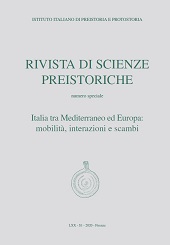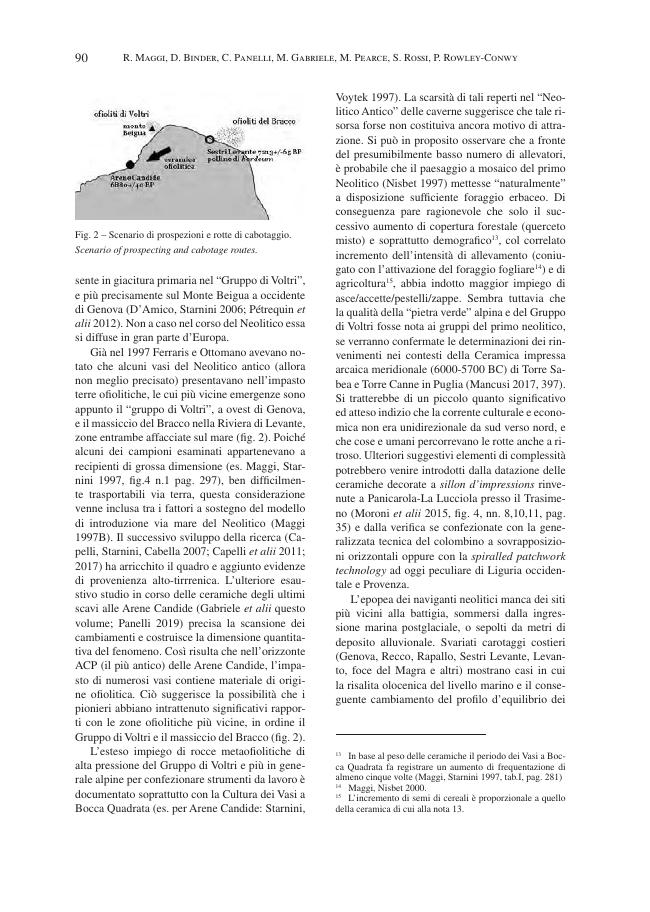Liguria : aperture e chiusure di un'isola fra due pianure
P. 83-97
This paper discusses Neolithic and Copper Age Liguria, Braudel's ‘island',a mountain chain situated between the Mediterranean and the Po plain.The Neolithic colonisation of western Liguria and the Mediterranean coasts of France happened a short time (as little as one century) after that of southern Italy and before either central Italy, Corsica or Sardinia; excavations at the Arene Candide cave confirm that the initial Neolithic is characterised by Impressa ware, followed by a Cardial phase, and that it is a full Neolithic, complete with cereals and domestic animals. The colonists appear to have chosen an area where later Mesolithic hunter-gatherers are not attested, although they traded for lithic materials with the neighbouring hunter-gatherer populations of eastern Liguria.
The importance of the ophiolites of Liguria is indicated by the trade in polished axes as far as Puglia, by inclusions in early Neolithic pottery and by the finding of Hordeum pollen dated 6222-5990 cal BC in a core from the prehistoric lagoon at Sestri Levante. In the Cardial phase, western Liguria became part of a larger cultural area including southern France. In the following centuries, in the context of the middle Neolithic Square-Mouthed Pottery culture, the region took on its historical role as the gateway between the Mediterranean and the Po plain. The later Neolithic Chassey culture, shared with southern France, comprised the development of mountain pastoralism and cheesemaking, which facilitated the exploitation of mountain resources such as copper that began in this period. [Publisher's text]
-
Articles from the same issue (available individually)
-
Information



